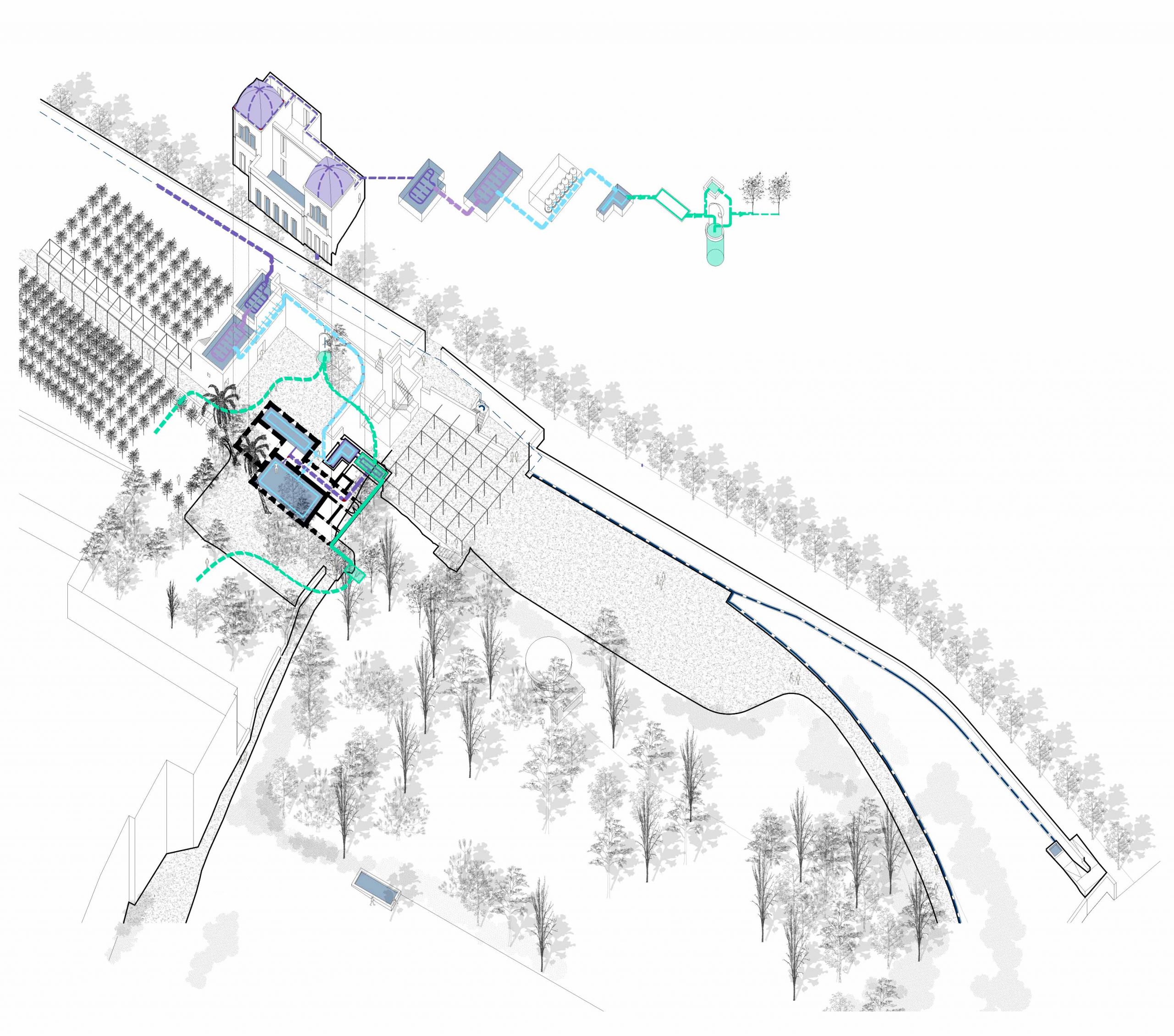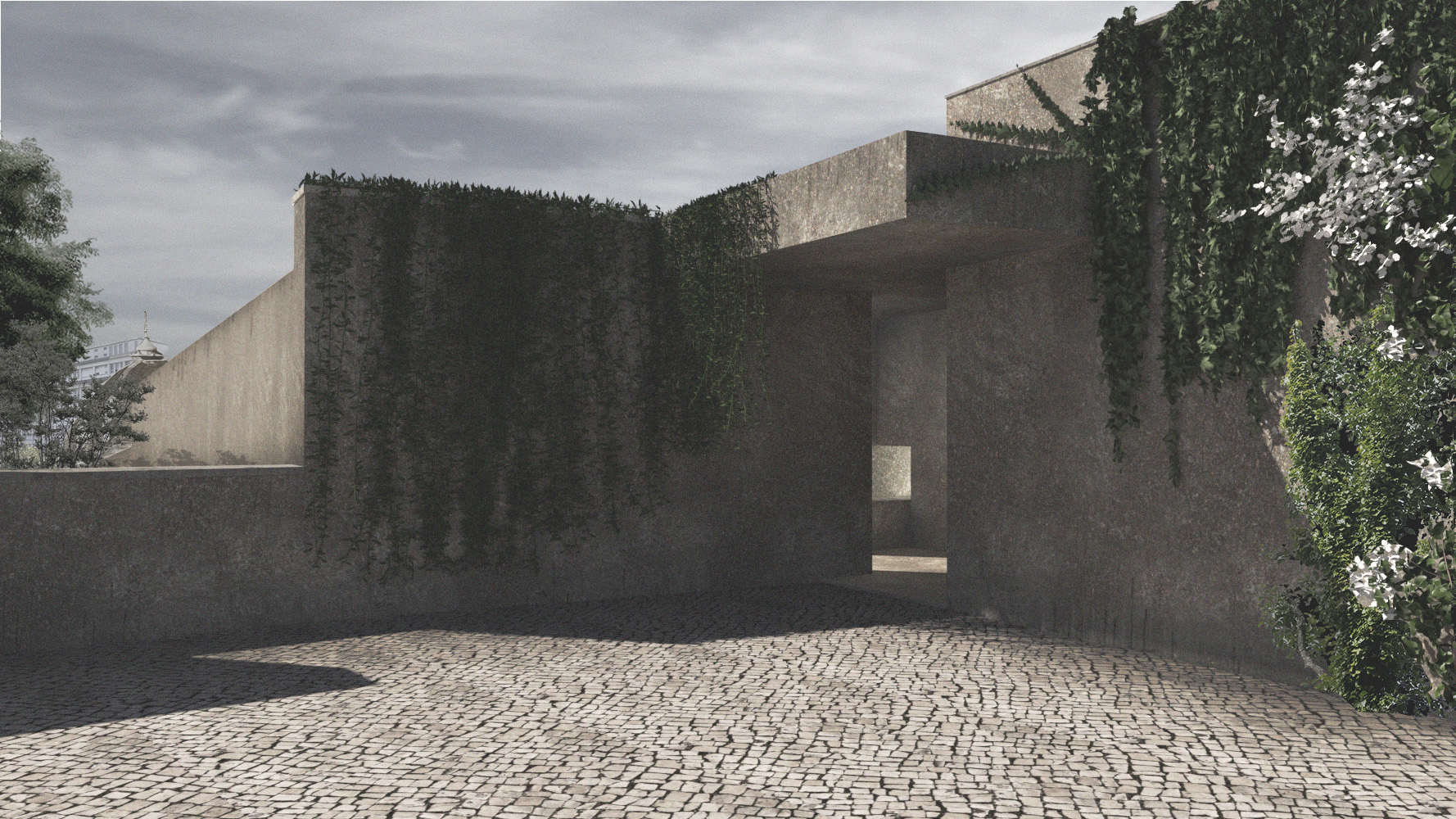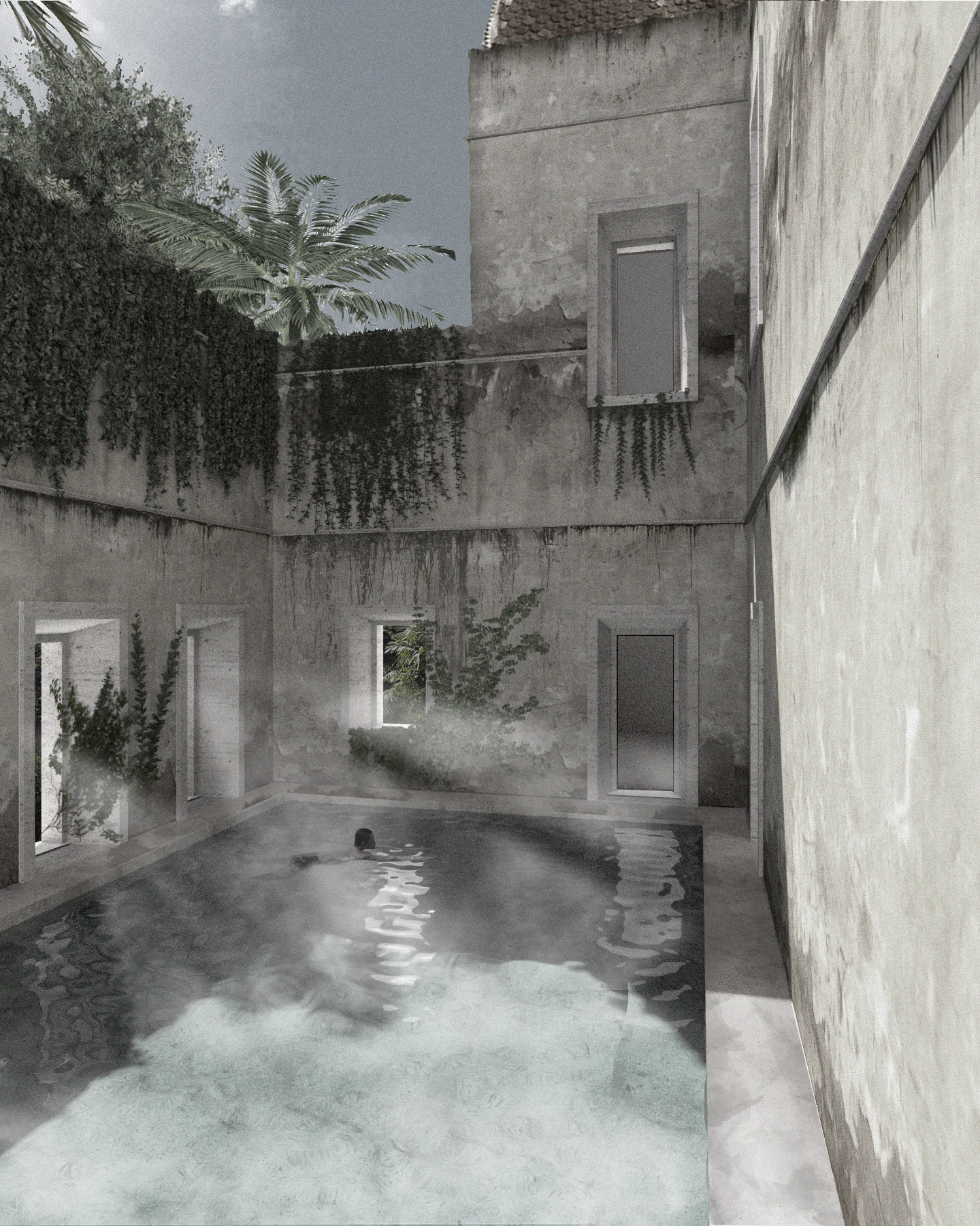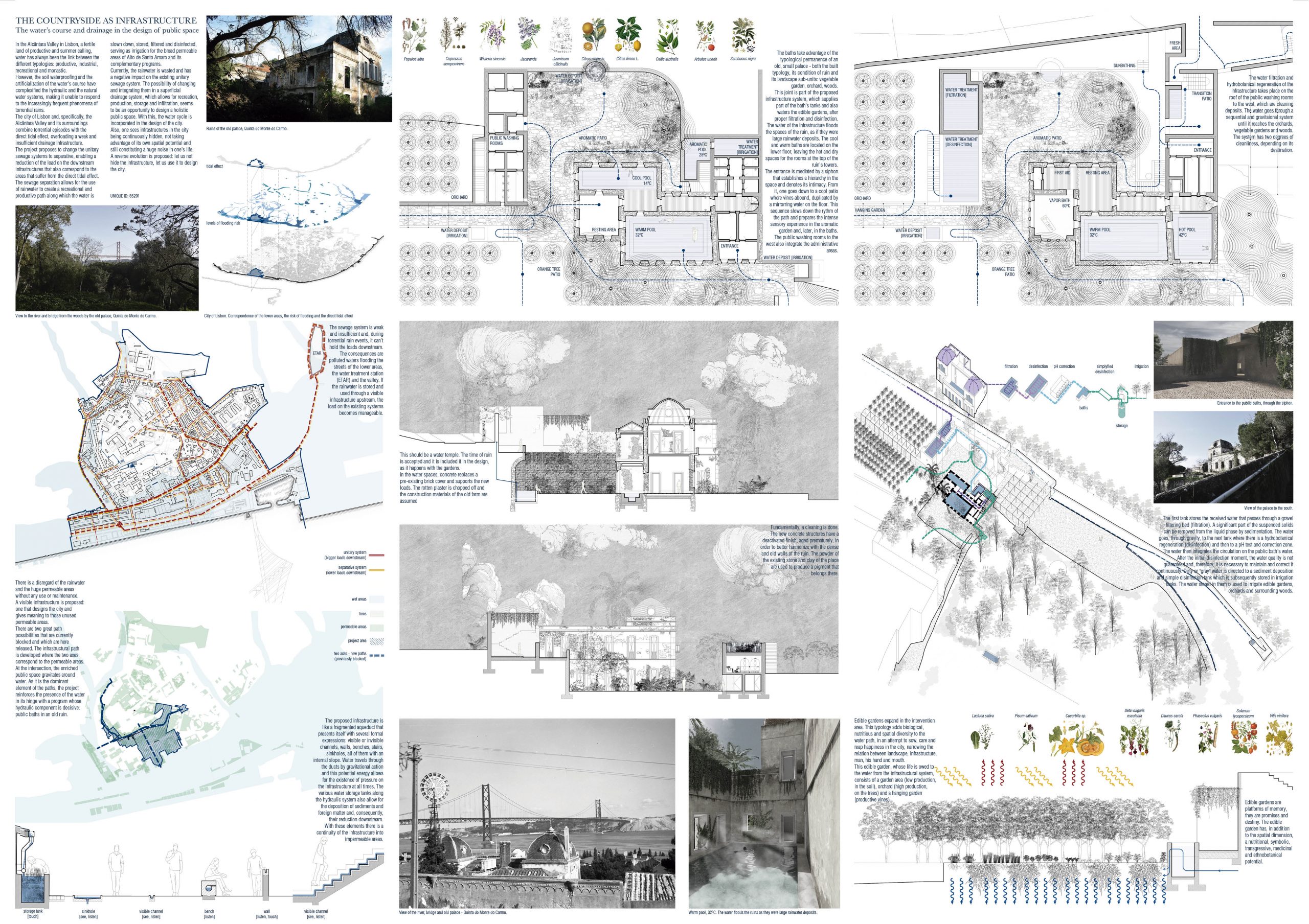In the Alcântara Valley of Lisbon, water has always been the link between the different typologies: productive, industrial, recreational and monastic. However, the soil waterproofing and the artificialization of the water’s course have complexified the hydraulic and the natural water systems. This, combined with with the direct tidal effect, overloads a weak and insufficient drainage infrastructure, making it unable to respond to the increasingly frequent phenomena of torrential rains. The project proposes to change the unitary sewage system to separative, enabling a reduction in the load on the downstream infrastructures. The rainwater is used, an infrastructure is created, made visible and the water cycle designs the city.

In the Alcântara Valley, a fertile land of productive and summer calling, water has always been the link between the different types of existing spaces: productive, industrial, recreational and monastic. However, the soil waterproofing and the artificialization of the water’s course have complexified the hydraulic and the natural water systems, making it unable to respond to the increasingly frequent phenomena of torrential rains. The city of Lisbon and, specifically, the Alcântara Valley and its surroundings combine torrential episodes with the direct tidal effect, overloading a weak and insufficient drainage infrastructure. Alto de Santo Amaro has high waterproofed slopes that overload Rua da Junqueira and, consequently, the Alcântara valley. Under extreme circumstances there is an inverse, thus unnatural, movement in the infrastructures: the water enters the system and the pressure causes direct discharges of the polluted flows into the receiving environment. The project proposes to change the unitary sewage systems to separative, enabling a reduction in the load on the downstream infrastructures. The sewage separation allows for the use of rainwater to create a recreational and productive path along which the water is slown down, stored, filtered, disinfected and serves irrigation for the broad permeable areas of Alto de Santo Amaro and complementary programs. Therefore, the water cycle is incorporated in the design of the city.

The public baths, the joint of the infrastructural path, take advantage of the typological permanence of Quinta do Monte do Carmo, both the built typology and its ruin condition and the landscape subunits. This hinge is part of the proposed infrastructure system and part of its tanks are supplied by it, after filtration and disinfection, as well as the edible gardens are watered by it. The vegetable garden is also explored in an attempt to sow, care and reap the happiness in the city, strengthening the relationship between landscape, infrastructure, men, his hand and mouth. The city of Lisbon was born and grew from the water and it is our duty to remember it, enjoy its passage and praise its presence. This proposal seeks that praise through the use of rainwater, while promoting a balance in the ecological systems and reducing the overloading of the existing infrastructures.

The Board:





